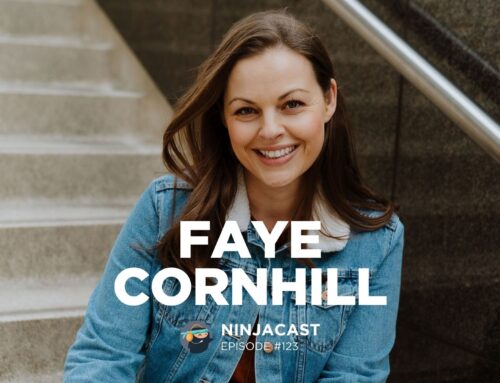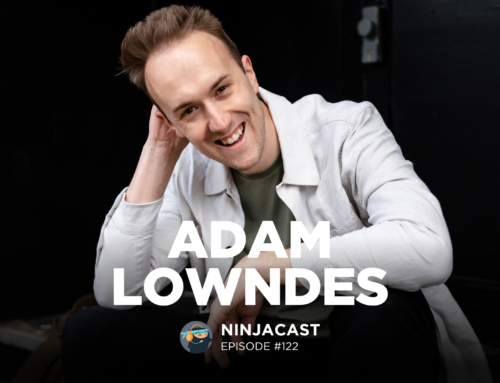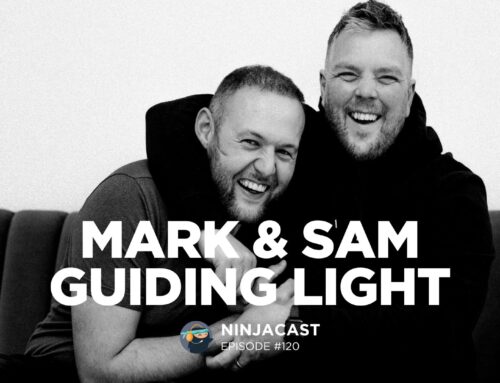094: Sean Lara – Your Go To Simple Lighting Solutions & Low-Cost Marketing Hacks!
April 10, 2023
“Once you’re grounded as a person and you’re grounded in your business – you’re going to see a lot of positive change.”
SEAN LARA
Hey everyone! It’s Sally here, from Studio Ninja. Today’s episode is all about Sean Lara!
For three years running, Sean has been recognized as one of the top wedding photographers in the world by the Wedding Photojournalist Association, Artistic Guild. Based in Colorado, he specializes in capturing environmental portraits using off-camera lighting. Originally a reporter for the Orange County Register, he is a photojournalist turned wedding photographer and has been documenting portraits and events for over a decade. As an ambassador for some of the most recognizable names in the photo industry, Sean can be regularly found sharing his photography passion with creatives around the world as a seasoned educator.
Check out some of the biggest points from Sean’s interview below:
How can we start to use simple lighting solutions?
Absolutely. And one of the big things I tell people is use the KISS method. Have you ever heard the KISS method? Yeah, okay. It stands for keep it simple, stupid. And that’s really what I try to tell a lot of the students and photographers that I’m teaching is it’s really easy to want to buy all this complicated lighting equipment and try to light a scene with three or four lights and just do all this complicated stuff. But honestly, all you really need to get started to do a lot of what I do, for example, is just one light. A lot of the portraits you see in my portfolio, I made with just one flash and that’s it.
Yeah, the simpler, the better in a lot of situations. Obviously when you start getting a little bit more technical, when you find yourself in the studio and you’re creating whole setups, then you can start using more lights and gels and all that fun stuff. But yeah, when I’m taking photos on location outdoors, a lot of the times, probably for 80% of my images, I’m using just one light.
I think one of the biggest things that people can do to get started is to first invest in… Well, I assume you already have your camera gear, invest in a nice portable light. As I mentioned, I use Geekoto, I really enjoyed the Geekoto GT200. And then you’ll also need a trigger to put on your camera to trigger that. And then also, another underrated tool is to get yourself a nice light stand that can easily work in an environment outdoors so it’s not going to fall over anything like that. Or find a buddy who’s a really good voice activated light stand that can wave it around for you. I personally don’t use lighting assistants, so I’ve been able to find light stands that I really like that will allow me to just put it down on the uneven ground with confidence that it’s not going to fall over.
So the first thing is to get just some really simple lighting equipment. And then one of the biggest tips I tell people is when you’re doing an environmental portrait, the easiest way to set your camera settings, because I always get questions like, “Oh, what settings are you using?” I tell people, “Don’t think of it as settings. What you want to do is first look at your scene and then expose before even adding flash. You’re exposing for the brightest parts in the scene.” So if you’re outside in the mountains, typically that’s going to be the highlights in the sky. So once you tell your camera, okay, I want to expose for these highlights in this scene, then you can add in flash on your subjects to help balance those exposures. That’s the most basic, easy way to create a well-balanced and well-lit environmental portrait without having to try to break it down in a way that’s complicated for people to understand. That’s the most simple way I can describe it.
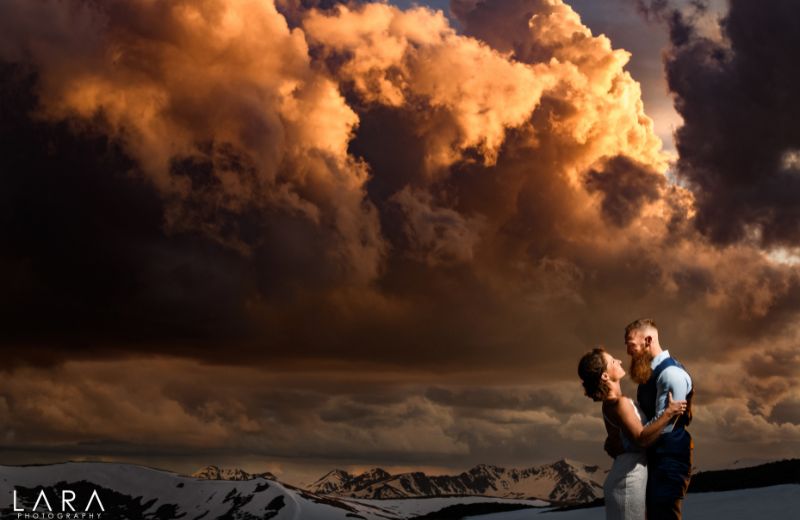
How do you get creative with one flash?
So we’ll stick to environmental portraits because sometimes it’s really hard to convince a bride to hike up the side of a mountain in her wedding dress and heels when it’s 20 degrees outside and it’s snowing and yada, yada. So the big thing that I always tell people is, I mentioned this a little bit earlier at the beginning of this, but try to find clients that really believe in you and your work and resonate with you. So for example, if I was a photographer in New York City and I had a bunch of photos of brides and grooms in the middle of the city with tall buildings in the background in my portfolio, I’m not going to approach those same couples and be like, “Okay, you ready to go hike onto the top of a mountain?” So you need to be able to attract those like-minded individuals, which is super important because you want to be able to get these couples on board with what you’re going to do.
So once you’ve found your ideal client, regardless of what segment of the industry you’re in, that’s super important, is finding your ideal client and finding your niche. In the example of environmental portraits, the big thing for me first to a successful portrait is finding the location, obviously. So I do spend a lot of time researching locations before my wedding day, before the engagement photo shoot, family photo shoot, whatever that might be. So I generally will like to try to find places that are easy to get to, again, because a lot of my couples are wearing big wedding dresses and I can’t ask them to do all this crazy hiking on the day of their wedding. Most of the photos you see in my portfolio are all real couples on the wedding day and I only have sometimes an hour at the very most to take photos of them.
So location is everything. I use a few tools to find locations. So for example, I will use Google Earth, if you are familiar with that web-based program, to help find locations. I’ll also go off-roading sometimes, I’ll do some adventures in my off-road vehicle to see if I can find some really cool, accessible locations. So that’s the big thing for me there is just finding the location. And then once you have that, there’s so many other elements to create a successful photograph, such as my composition, how do I incorporate the landscape in my photos, my light placement in relation to the sun. So for example, if I’m lighting a portrait when it’s sunny outside, I’ll try to mimic the direction of the light from the sun to make it look natural.
And then of course, my pose is another thing as well that is super important too because a lot of times when you’re using flash, if you have your couples pose incorrectly, you can get some awkward shadows. So that’s something I’m always trying to keep in mind as well. And then of course, just my exposure settings, what we talked about a little bit earlier, I want to make sure everything works, my highlights are properly exposed in the scene, I’m not killing the detail of my shadows too much, so there’s just that nice balance and that finesse that takes a little bit of time to develop and figure out how to work around.
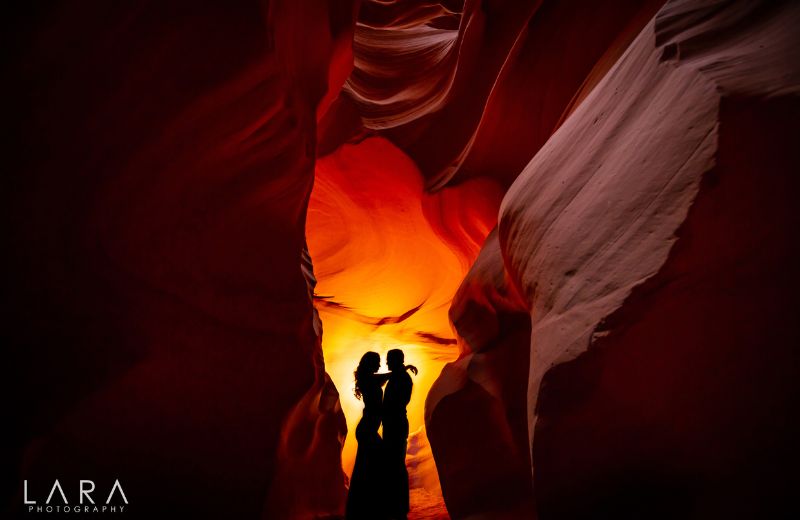
What are your top tips for posing couples when using flash?
When it comes to posing, very similar to what I was mentioning earlier, I like to keep it very simple. Generally if I’m taking some natural light portraits, which I actually do try to incorporate in all my work as well, then I get a little bit more movement, a little bit more creative with the posing in general, just because you don’t have to worry about how your shadows are hitting your couple when it comes to using off-camera flash. If you’re shooting in direct sun, obviously you’re going to get shadows, but a lot of times when I do my natural light portraits, I’m looking for open shade or areas where the light’s a little bit more even. So then I get a little bit more intimate with my posing when I do the natural light stuff.
But when it comes to my off-camera flash work, I generally do simple stuff. One of the things I do a lot is what I call the prom pose for adults, where usually the groom will hold the bride behind on her waist and then she’ll kind of look back at him. Or I do the same thing with same-sex couples as well. In that case, whoever’s the taller couple, I’ll put them behind. So that’s a really big one. And then I’ll do a lot of walking poses to show some movement, which is easier to do when you have an assistant so they can walk with them. But as I mentioned, I don’t always have assistance, so I’ll just put my light on a light stand and have them walk into the light, get a couple photos off, and then call it good. And then just the old turn and face each other and hold each other intimately and look into each other’s eyes. So those are probably three poses I utilize the most when it comes to my off-camera flash work in relation to environmental portraits.
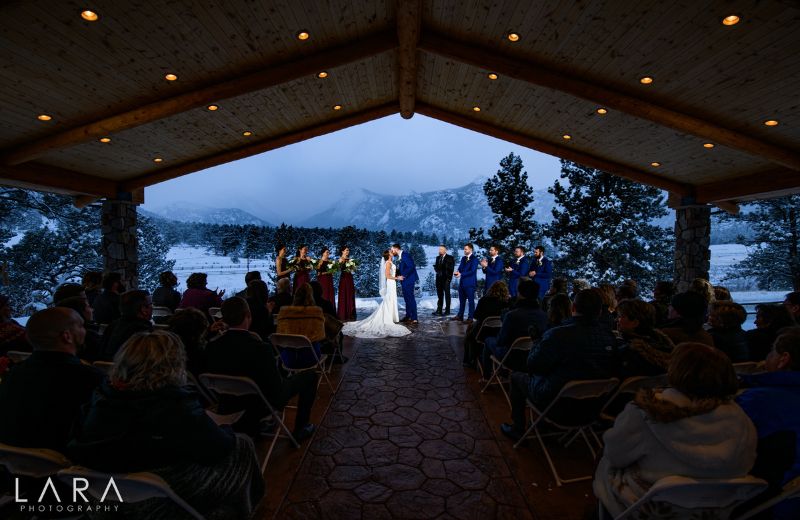
Thank you!
Thanks again to you all for joining us and a huge thanks to Sean for joining us on the show!
If you have any suggestions, comments or questions about this episode, please be sure to leave them below in the comment section of this post, and if you liked the episode, please share it using the social media buttons you see at the bottom of the post!
That’s it for me this week, I hope you all enjoyed this episode.
See you soon,
Sally
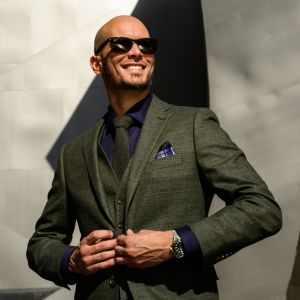
About Sean Lara
For three years running, Sean has been recognized as one of the top wedding photographers in the world by the Wedding Photojournalist Association, Artistic Guild. Based in Colorado, he specializes in capturing environmental portraits using off-camera lighting.



